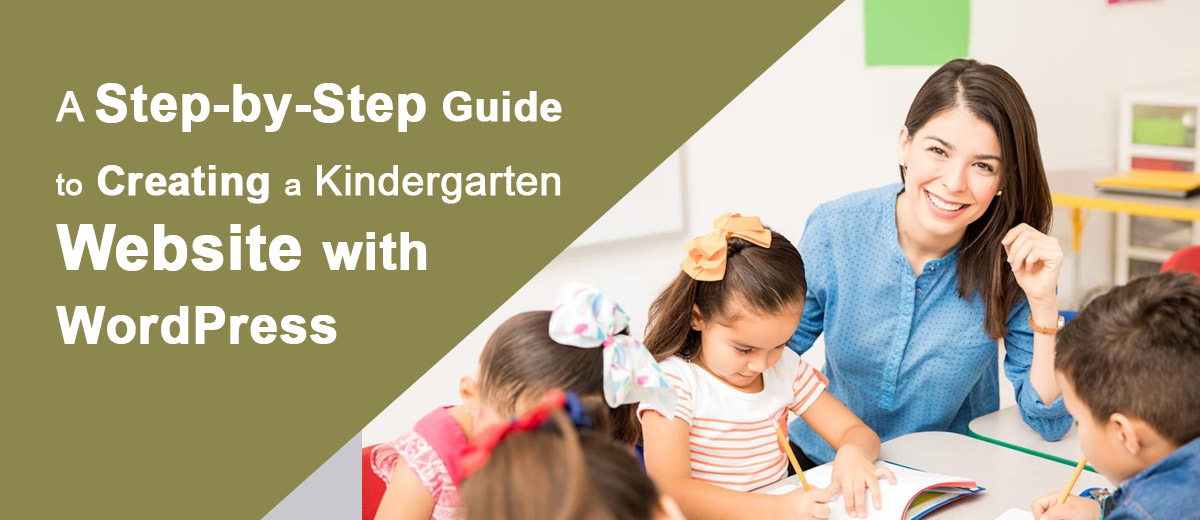In the digital age, having an online presence is crucial for educational institutions, including kindergartens. A website serves as a powerful tool to connect with parents, showcase the school’s environment, and provide essential information. WordPress, a user-friendly content management system, makes it easy for even non-technical users to create a professional and functional website. This step-by-step guide will walk you through the process of creating a kindergarten website using WordPress.
Step 1: Set Up a Domain and Hosting:
Before diving into website creation, choose a domain name that reflects your kindergarten’s identity. Purchase a domain from a registrar and select a reliable hosting provider. Popular choices include Bluehost, SiteGround, and HostGator. Follow the provider’s instructions to link your domain to the hosting account.
Step 2: Install WordPress:
Most hosting providers offer a one-click WordPress installation. Log in to your hosting account, locate the “Install WordPress” option, and follow the prompts. Set up your admin credentials and keep them secure.
Step 3: Choose a Kid-Friendly Theme:
WordPress offers a vast library of themes suitable for various niches. Search for a kindergarten or education-focused theme. Ensure the theme is responsive, visually appealing, and customizable. Popular choices include i-spirit, Astra, OceanWP, and Neve.
Step 4: Customize Your Website:
Access the WordPress dashboard and navigate to “Appearance” > “Themes” to activate your chosen theme. Begin customization by going to “Appearance” > “Customize.” Modify site identity, colors, fonts, and other theme-specific settings to align with your kindergarten’s branding.
Step 5: Create Essential Pages:
Design a user-friendly navigation structure by creating essential pages. Common pages for a kindergarten website include Home, About Us, Programs, Admission, Gallery, and Contact. Go to “Pages” > “Add New” to create each page and use the WordPress block editor to add content.
Step 6: Add Engaging Content:
Enhance your website with engaging content. Create compelling and informative copy for each page. Utilize multimedia elements such as images and videos to showcase the kindergarten’s environment, activities, and staff. Consider adding a blog section for updates and educational resources.
Step 7: Implement Contact Forms:
Facilitate communication by adding contact forms. Use the popular plugin Contact Form 7 or WPForms to create forms for inquiries, admissions, or general communication. Embed the forms on relevant pages, such as the Contact page.
Step 8: Integrate Social Media:
Connect your kindergarten website with social media platforms to extend your online presence. Add social media icons linking to your kindergarten’s profiles. Consider embedding a social media feed to display real-time updates.
Step 9: Ensure Mobile Responsiveness:
Test your website’s responsiveness on various devices to ensure a seamless user experience. Most WordPress themes are mobile-friendly by default, but it’s essential to verify the design on smartphones and tablets.
Step 10: Implement SEO Best Practices:
Optimize your kindergarten website for search engines to improve visibility. Install an SEO plugin like Yoast SEO or Rank Math to assist with on-page SEO elements. Add meta titles, descriptions, and alt text for images.
Conclusion:
Creating a kindergarten website using WordPress is a straightforward process that empowers educators to showcase their institution effectively. With the right theme, customization, and content, your kindergarten website will become a valuable resource for parents and a window into the vibrant world of early education.
How useful was this post?
Average rating 5 / 5. Vote count: 1
No votes so far! Be the first to rate this post.


